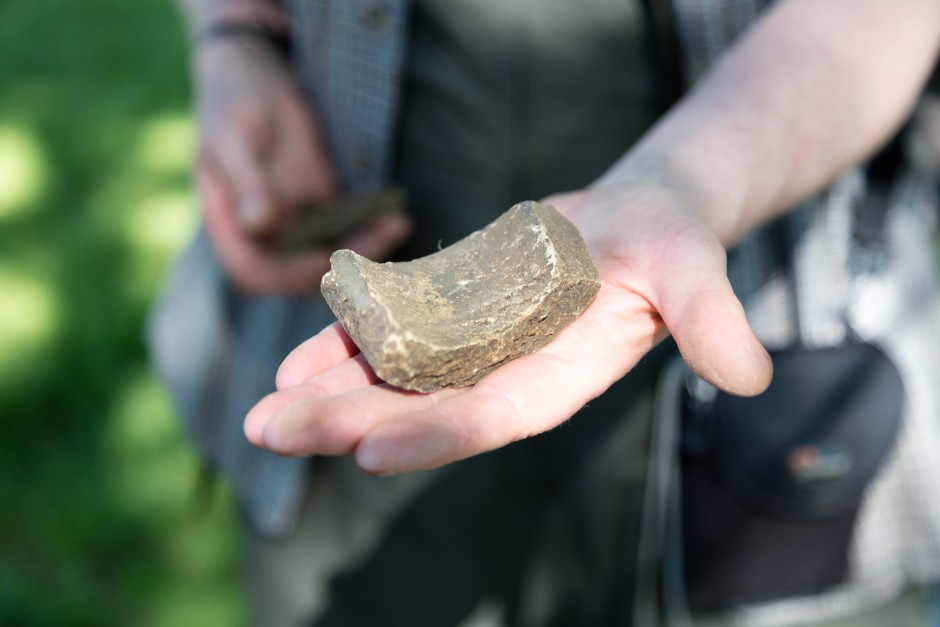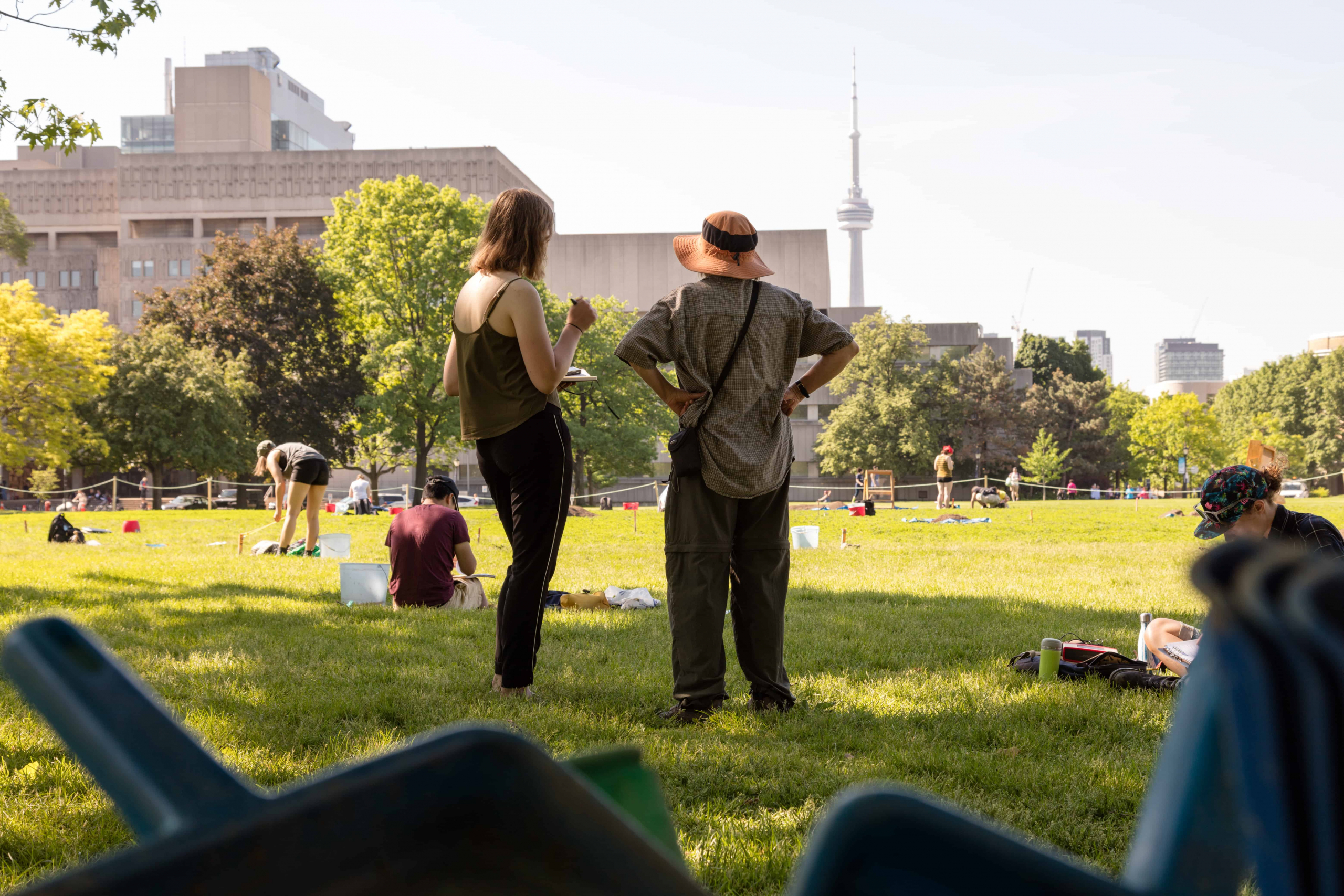[dropcap]I[/dropcap]t may be the summer, but on a Tuesday morning, University of Toronto’s front campus is already buzzing with activity. Grounds crews are hard at work under a cloudless sky. Tourists are especially prevalent, each taking more than enough pictures of University College’s iconic tower. Before they make their way south towards Convocation Hall, the tourists slow to stare at a group of approximately 15 students surrounded by a yellow rope barrier and intermittent piles of dirt.
This was a U of T Field School, part of the Archaeological Field Methods course. Initially, there were full-day classes on mapping and archaeology techniques. After practicing their mapping skills behind Gerstein Library, students began excavating in King’s College Circle. They were expected to run their one by one metre squares with the precision of a professional archaeology site, while taking detailed notes and photos of their findings.
[pullquote-default]The UC fire destroyed the interior of University College in 1890. Pieces of shell beads, buttons, and nails have been found by students in the dig sites, offering tangible evidence of U of T’s long history.[/pullquote-default]
“It’s not intended to find artifacts,” said Sally Stewart, one of the two professors teaching the course. “What [the students] are finding is a lot of construction debris… We’ve also found window glass as well, some of which look melted. We’re wondering if it came from when the fire that happened [at UC].”
The UC fire destroyed the interior of University College in 1890. Pieces of shell beads, buttons, and nails have been found by students in the dig sites, offering tangible evidence of U of T’s long history.
Despite tempering expectations, Stewart became increasingly excited as she discussed her students’ findings. A graduate of U of T herself, Stewart’s career has taken her all over the world, particularly in and around the southern European continent. Despite her latest site being close to home, Stewart still looked prepared as ever, observing her students in steel-toed boots and coveralls.
[pullquote-image]

Piece of a clay pipe. NATHAN CHAN/THE VARSITY
[/pullquote-image]
It may be the professional enthusiasm that energizes these students. Paul Duffy, who specializes in Eastern European Bronze Age Archaeology, is the second professor of the course. “It’s probably the best instruction I’ve had at U of T so far,” said graduating Archaeology major Diana Hansen.
Students have the option to attend field schools around the world, with opportunities in Peru and the Hungary. However, the costs are high and, as Stewart explained, there is little instructional time. The goal of international digs is to find artifacts, not necessarily to prepare students for their professional careers.
As the morning progressed, university staff began to appear, preparing the large, white convocation tent that is characteristic of this time of year. According to Stewart, the administration was worried that students digging up the northeast corner of the field wouldn’t look aesthetically-pleasing. However, they soon changed their tune with positive feedback. “Probably close to a hundred people come by [per day], from alumni events and then convocation… people just wandering by asking questions,” said Stewart.
Under the watchful eyes of a new crowd of tourists, the students settle in for another long, hot day. But the exhaustion of a full day is certainly worth the opportunity to finally do something they spent years learning.


